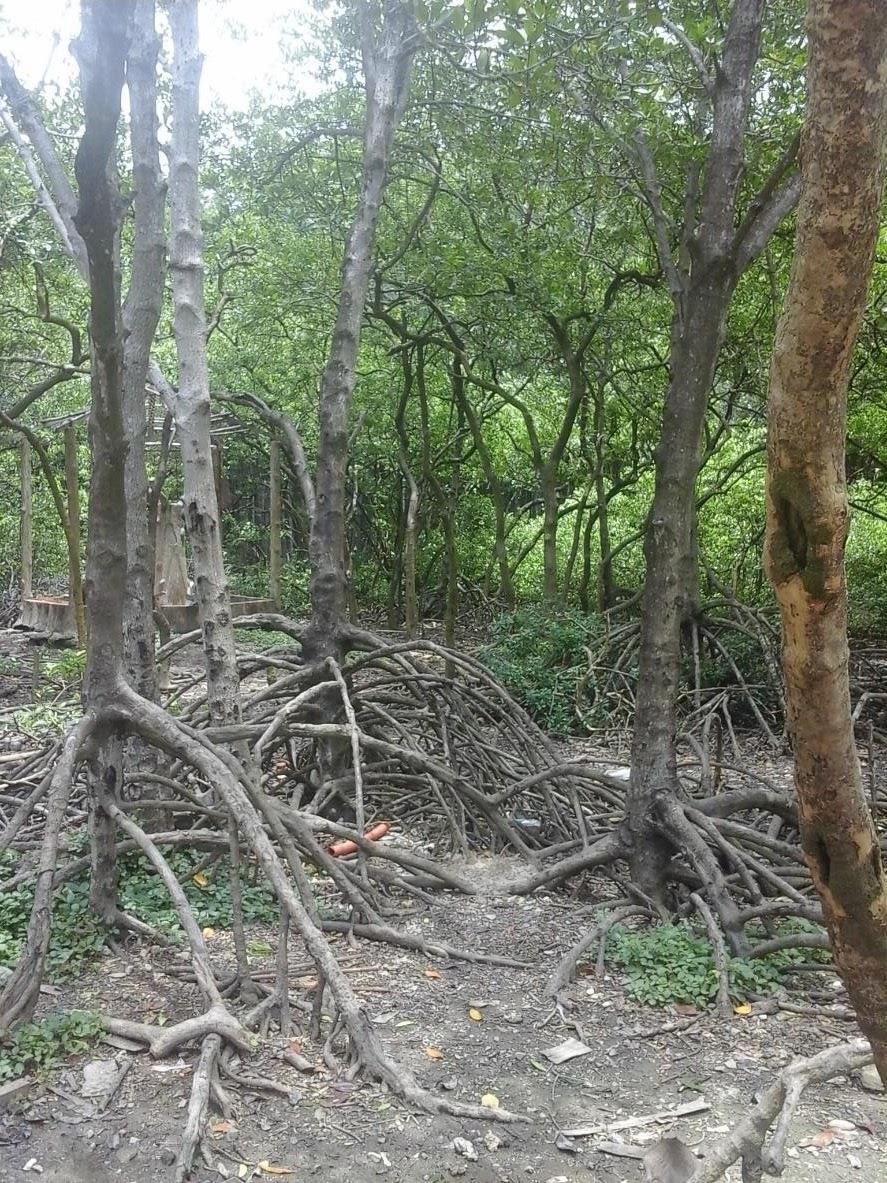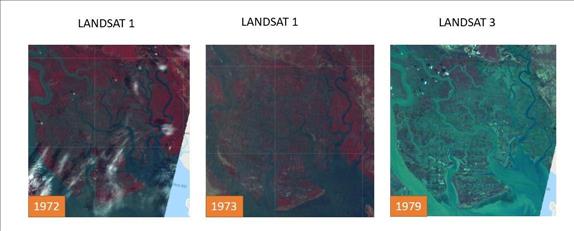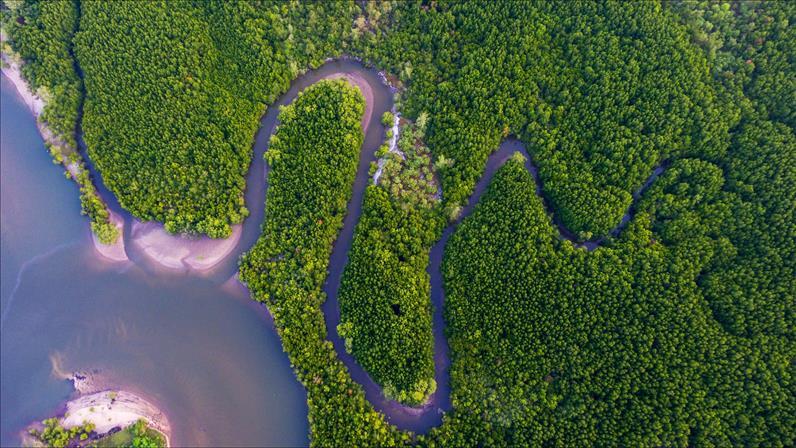
Satellite tech, forest guardians protect Vietnam''s mangroves
(MENAFN- Asia Times) Scientists confirm that the lush green mangrove forests in Vietnam are now threatened by the devastating impacts of climate change in combination with human disturbances, accelerating the degradation of these fragile ecosystems.
Some have suggested that the tidal forest's extensive root systems and ability to adapt to changes mirrors the national character of the Vietnamese, who have fought wars, beaten back invaders, and survived famines, floods, landslides and typhoons.
Monitoring the changes in spatial distribution and quality of the small trees that grow in coastal or brackish water remains an urgent protection and restoration task, since the livelihoods of so many depend on these mangroves.
It's no wonder, then, that Vietnam is embracing high technology and forest guardians to address climate-change impacts on the rainforests. The exigency is prompted by the loss of nearly half of Southeast Asia's mangroves over the past three decades.
Population growth, pressure of economic conditions and the dioxin contamination attributed to the military use of napalm during the Vietnam War have measurably destroyed Vietnam's mangroves.
The transformation of the mangrove areas for agricultural land use, intensive shrimp farming and mud crab ponds, coastal erosion, typhoons, tidal regimes change, are all responsible for deforestation and degradation. This is especially evident in the Mekong Delta, where storm storks, white-winged wood ducks and spotted-billed pelicans one peacefully assembled.
With changing attitudes and eco-education workshops, farmers understand that their ''blue forests,'' as they are sometimes called, offer them a frontline defense against rising tides, aid fish nurseries, trap sediment and sequester carbon.
Inside the story of mangrove forests in VietnamVietnam, with a coastline snaking along 3,200 kilometers and including beautiful sandy beaches, offers vast potential for mangrove ecosystems. Before the Vietnam War, studies showed that about 400,000 hectares were covered by mangroves, primarily distributed in the Mekong Delta and about half in Ca Mau peninsula.
Professor Phan Nguyen Hong, a recognized authority on mangroves, has systematically chronicled Vietnam's forested areas, from the Red River Delta in the north, to the Central coast, and to the Mekong Delta, with a focus on the ecological stability of Can Gio and its verdant diverse vegetation.
It is in this protected area, situated on an estuary, where the Saigon and Dong Nai rivers empty into the sea, that forest rangers and local guardians, such as Nguyen Kim Hoang, rehabilitate mangroves.
According to Professor Hong, ''Twenty years ago, Can Gio was designated as Vietnam's first Biosphere Reserve under the Man and Biosphere Reserve Program of the United Nations Education, Scientific, and Cultural Organization (UNESCO).''

Roots of Can Gio mangrove forest.
Hong credits the government for its efforts to reward and offer financial support to individual families living in the Can Gio forest area. In fact, up to 167 families have received as much as US$150 to build guard stations and purchase boats, water containers, and other necessary tools to protect the forest area.
Hong's scholarship and interviews with locals and government officials offer hope of an expanding participatory environmental practice engaging more stakeholders to assist in the establishment of sustainable agricultural and forestry enterprises.
Can Gio mangrove forest and field survey photos. Center: survey points are visibly overlaid on a Google Earth image.
A mix of in-the-field monitoring and remote sensing technology, seen in Geographic Information System (GIS) mapping, has been instrumental in insuring the future of mangrove forests. These techniques have demonstrated a high potential to detect, identify, map, and monitor mangrove conditions and changes over the last three decades and are widely seen in the increasing number of papers being published.
The rampant acceleration of the erosion of the shorelines rimming the Mekong River has led to the increased importance of using high-resolution satellite images for evaluating the advances or retreats of mangrove belt fringing.
Numerous academic studies establish baselines, identify and classify appropriate data on changes in land cover. There is common agreement that there's no certain and perfect methods for classification by an examination of pixels depicting change and unchanged areas.
Experts insist that about 70% of field survey data captured are used primarily for training the satellite image classification, while only 30% is for validation since the common problem normally occurs in the classification or confusion between wetlands and mangroves, or between water surface and shrimp farming.
Yuei-An Liou, a distinguished professor at the , says that the satellite generations of the Landsat Program of the US Geological Survey (USGS) provide the longest time spans for the forest land cover monitoring.
This satellite archive now gives rise to new opportunities in the field of forest study by reconstructing the historical baselines over several past decades in a continuous fluid manner. The temporal depth of the Landsat archive with current classification methods aided by artificial-intelligence approaches has proved beneficial for gaining insights into the processes of forest tree species and high accuracy baselines at different scales.

Landsat time series images in 1972, 1973 and 1979 showing the damaged mangrove forest due to the Vietnam War. Credit: Yuei-An Liou for images from USGS
In addition, the satellite images reveal the footprint of the Can Gio mangrove Biosphere Reserve, located about 60km south of Ho Chi Minh City, and one of the first UNESCO-managed reserves in Vietnam.
However, this 75,670-hectare area, home to one of the largest rehabilitated mangrove forests and an essential defense against storm surges, is now pitted against a planned $9.3 billion development by Vinagroup, one of Vietnam's largest private companies.
Although their real-estate development will be downstream from the mangroves, the plan spans 2,870 hectares and is marketed as ''Can Gio Tourist City,'' promising luxury homes, convention centers and even a planned skyscraper.
According to climate-change consultant and independent researcher Nguyen Huu Thien, the proposed project may require more than 138 million cubic meters of sand to reclaim the land for this mega-project.
Reports indicate that the required sand will be dredged from the Mekong Delta, already under subsidence pressure from losses resulting from upstream China-built dams.
''The over-exploitation of sand is one of the main causes of landslides along riverbanks and this type of large-scale extraction impacts on the river ecosystem,'' claims Vu Ngoc Long, president of the Southern Institute of Ecology.
In the 30,000-hectare Can Gio mangrove, additional local forest guardians, such as Sang Thi Phung, know the importance of the wetlands, salt marshes, mud flats and sea grasses. Over the past 15 years, the Tien and Hau Rivers have lost more than 200 million tons of sand, lowering the riverbeds by 1.3 meters.
Phung, 39, a second-generation forest guardian, has assumed the role of a sentinel, according to an insightful article by the . Her life, along with other families, remains intertwined with this biosphere reserve.
The Mekong Delta offers winding postcard images of the network of channels and nearby shrimp farms, complete with images of industrious farmers toiling in the rice paddies in one of Vietnam's most fertile regions.
With threats to the mangroves increasing, the Mekong Delta may no longer be Vietnam's rice basket, since the region's entire natural wetlands are in peril. Consequently, the local farmers may be in a race against time as more extreme flood events, rapid groundwater depletion and saltwater intrusion continue.
Brian Eyler, a leading expert on the Mekong River, and author of Last Day on the Mighty Mekong, warns that ''without sufficient sediment to replenish the land, the delta will sink beneath the East Sea – a problem compounded by unsustainable groundwater pumping and a rising sea level.''

Legal Disclaimer:
MENAFN provides the
information “as is” without warranty of any kind. We do not accept
any responsibility or liability for the accuracy, content, images,
videos, licenses, completeness, legality, or reliability of the information
contained in this article. If you have any complaints or copyright
issues related to this article, kindly contact the provider above.

















Comments
No comment